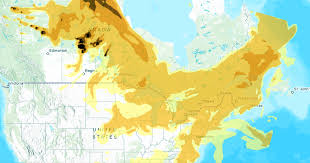
Introduction
Hardy plants play a crucial role in gardening, especially in Canada where climate conditions can be challenging. These plants are capable of surviving harsh winters and fluctuating temperatures, making them an essential choice for homeowners looking to cultivate lush gardens while minimizing maintenance. As climate change continues to pose unforeseen challenges, understanding the resilience of hardy plants has never been more relevant.
What Are Hardy Plants?
Hardy plants are defined as those capable of withstanding specific temperature extremes and adverse weather conditions. In Canada, this typically refers to perennials that can survive winter temperatures down to -30°C, categorized as USDA hardiness zones 3 and colder. Some examples include various species of conifers, hardy shrubs, and perennials such as sedum, peonies, and daylilies.
Recent Trends in Hardy Plant Usage
With a growing interest in sustainable gardening practices, more Canadian gardeners are now opting for hardy plants that require less water and care. According to a recent survey by the Canadian Nursery Landscape Association, nearly 70% of gardeners are looking for more resilient flower, shrub, and tree options that don’t compromise on aesthetics. This trend not only enhances the beauty of gardens across Canada but also contributes to biodiversity and supports local ecosystems.
Biodiversity and Environmental Impact
Hardy plants have an important role in promoting biodiversity. They tend to support native pollinators and other wildlife, which are essential for a healthy ecosystem. The recent push for incorporating native hardy species into landscaping showcases the commitment of gardeners towards fostering a more balanced environment. Planting native, hardy species can reduce the reliance on chemical pesticides and fertilizers, further benefiting the planet.
Conclusion
The significance of hardy plants in Canadian gardening cannot be overstated. As they offer beauty, resilience, and environmental benefits, they are becoming increasingly popular among homeowners and landscapers alike. Future forecasts suggest that this trend will only grow as awareness of sustainable practices expands among Canadians. For readers interested in gardening, incorporating hardy plants will not only contribute to personal garden success but also promote ecological sustainability.




